Iranian Tortured Protester Dies After Falling Into Coma
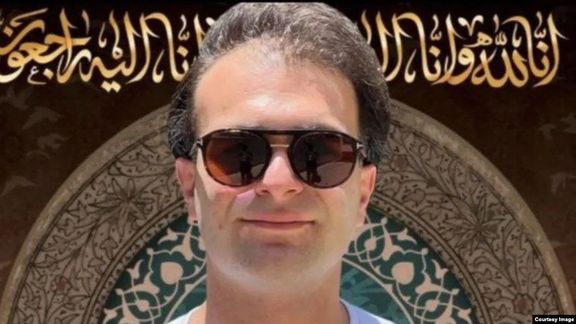
A detained protester in Iran, who was hospitalized and fell into a coma after his temporary release, died after 20 days.

A detained protester in Iran, who was hospitalized and fell into a coma after his temporary release, died after 20 days.
The funeral ceremony of Mehdi Zare Ashkezari was held in Ashkezar, Yazd province, while his name was first mentioned as one of the detainees during the protests.
Ali Janaban, one of Mehdi’s friends living in Bologna, Italy, confirmed the reports that he fell into a coma "a few hours after his temporary release" and "died after 20 days as a result of tortures in custody."
Mehdi was a university student in Bologna until two years ago, when he returned to Iran due to his family's need for his support.
The death of Mehdi had repercussions in the university where he studied and received coverage in some Italian media.
Ali Jenaban told Radio Farda that Mehdi participated in the protests like many other people and was arrested.
"He was severely tortured there, his nose and teeth were broken and then he fell into a coma for 20 days," he added.
Jenaban also noted that Mahdi's colleagues and Iranians living in Italy are going to hold rallies in Bologna in the coming days to protest.
Since the uprising against clerical rulers in Iran in mid-September, the identities of many detainees have not been revealed, and in some cases, and families have been reluctant to publicize the detention of their loved ones fearing the security forces.
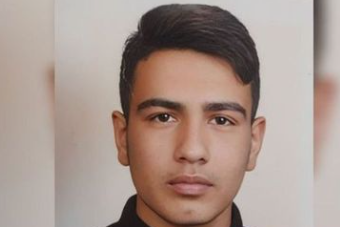
Reports say an 18-year-old who was arrested during nationwide protests in Iran has been sentenced to double death on charges of “war against God” and “corruption on earth”.
The US-based Human Rights Activists News Agency HRANA reported Monday that Mehdi (Shayan) Mohammadifard, who was arrested in the northern city of Nowshahr on October 2, has received two death sentences issued by a Revolutionary Court.
He has also been sentenced to seven years of penal service on charges of “insulting the Supreme Leader”, “acting against the county’s security”, as well as “propaganda against the institution”.
HRANA added that this political prisoner was deprived of the right to have a lawyer and in the absence of his chosen solicitor, the court accused him of "directing and planning" the protest rally on September 21 in Noshahr.
According to judiciary claims and the issued verdict, five people were killed during the protest.
An informed source close to Mohammadifard's family said, “all the confessions by the defendant during the interrogation were obtained under duress.”
“The only documents against him, which led to the death sentence, are the forced confessions obtained during the interrogation, as well as a film attributed to Mehdi, in which the face of the person is not clear at all,” added the source.
HRANA also wrote that in recent days, it has identified 58 citizens who are sentenced to death or are at risk of receiving the death sentence.
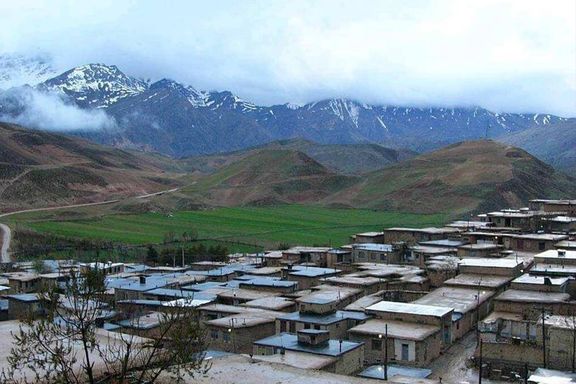
Reports from Semirom in Iran indicate a dangerous situation for residents, as security forces have arrested many people following protests on Saturday.
Residents in the town held a large memorial gathering on Thursday for Ali Abbasi, a protester killed by security forces in November, chanting slogans against the Islamic Republic and its ruler Ali Khamenei. They also held a protest outside the local governor’s office on Saturday.
Reports on Sunday say that the government deployed hundreds of regular and irregular security forces in Semirom in Esfahan Province and began arresting residents, particularly family members of victims killed in November.
A Twitter account, 1500 Tasvir, reporting on protests in Iran described the situation in Semirom Sunday as a “war.” “The Islamic Republic has placed is ‘Special Force’ troops everywhere in the city who are acting brutally and people are fighting them with empty hands,” a tweet said.
Another tweet reported that at 5 am Sunday, security forces attacked houses of the families of those killed last November.
Semirom was one of dozens of sleepy rural towns where no one expected a antigovernment protest. But in November unrest began in the settlement and several residents were killed by security forces.
More than 500 civilians have lost their lives as a result of government violence since September, when protests began after Mahsa Zhina Amini, a 22-year-old woman was fatally beaten in police custody apparently for not fully abiding by the government’s Islamic dress code.

The protests in Iran continue daily in many locations but the regime perceives a simple act of civil disobedience as alarmingly damaging to its foundations.
The current wave of protests threatening the Islamic Republic started in mid-September after 22-year-old Mahsa Amini was killed in custody of the country’s hijab police. In the months that led to the tragic incident hardliner President Ebrahim Raisi had been intensifying measures over the observance of mandatory hijab in public, which many urban women were barely following.
However, the measures apparently backfired and led to many campaigns of removing hijab in public in protest to the mandatory Islamic dress code. Moreover, after the death of Mahsa Amini, appearing in public without hijab has become a very popular way of protest, especially in bigger cities. Now the regime seems frustrated over its inability to impose hijab because every measure makes people angrier. But the clerical rulers and their religious followers cannot tolerate the growing phenomenon.
Following the recent propaganda stunt by the government claiming that the ‘morality police’ was disbanded, media are full of interpretations of how the regime plans to both enforce the dress code regulations and at the same time appease protesters. Iran's police declined to confirm Prosecutor General Mohammad-Jafar Montazeri’s claim on December 3 that the notorious "morality police" was deactivated.
Hardliners say hijab enforcement will never be abolished, insisting that “veils will be back on women’s heads soon,” while acknowledging that a growing number of women are appearing in public without hijab. A lawmaker said in December that the regime is making some decisions about hijab rules, explaining that the methods for enforcing hijab may change. He added “it is possible that women who do not observe hijab would be informed via SMS, asking them to respect the law. After notifying them, we enter the warning stage... and last, the bank account of the person who unveiled may be blocked."

On Sunday, Fars news agency, affiliated with the hardliners and the IRGC, cited an unnamed police source as saying that a new phase of a plan to enforce hijab has started across the country. The news agency also confirmed reports that many people had received warnings via SMS about removing hijab in their cars.
Also on Sunday, Ali Khan-Mohammadi, the spokesperson of Iran’s Headquarters For Enjoining Right And Forbidding Evil, tasked with promoting the Islamic Republic’s interpretation of Islamic laws, defended the government’s move to shut down and seal businesses that serve women who are not observing the Islamic dress code.
In recent days, a large number of lawmakers and other officials have called for plans to deal with women who unveil. Among these plans for facial identification of those without hijab using CCTV cameras and refusing them social services. In some cities, people without hijab have been prevented from entering some banks and other institutions. In addition, some bank managers have been fired for providing services to women without hijab.
Last week, the Islamic Republic’s prosecutor-general threatened Iranian women again, saying unveiling in public is an act “planned and promoted by enemies,” and described it as a “crime.” Montazeri said one of the “enemies’ plots” in the past few months was breaking the norms and redlines of the Islamic regime. He went on to threaten that people who unveil will be strictly confronted.
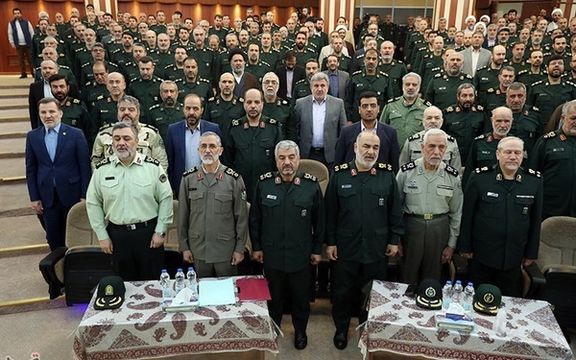
Since the start of the antigovernment protests, remarks by military commanders about the unrest are occasionally leaked to the media leading to speculation that the leak was intentional.
A video footage of Revolutionary Guard Commander Brigadier General Hamid Abazari is one of these contentious leaks. In a video released recently, Abazari hinted at division among the Islamic Republic’s top military men amid continuing anti-regime protests.
Abazari, who formerly served as deputy commander of the Imam Hossein Training and Officer University, criticized senior commanders and officials who had "failed [to stand by] the values of Supreme Leader Ali Khamenei and the regime." He claimed that he personally knows several high-ranking IRGC senior officers, including some of his own commanders, who caved in and did not support the regime.
Abazari also rebuked senior civilian officials who had not condemned the protests and alleged that some stood against Khamenei.
IRGC’s public relations department reacted to his remarks on December 31, issuing a statement stressing that this was Abazari's personal opinion and "does not correspond to existing facts."
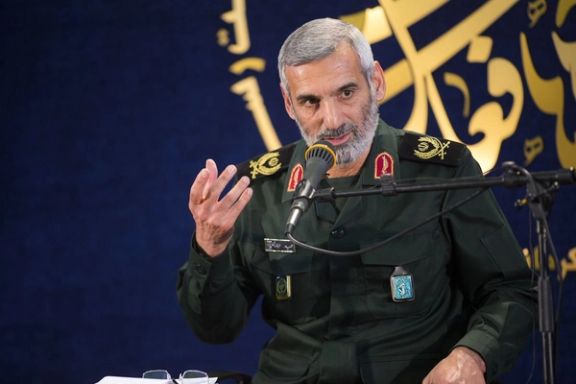
Moreover, another senior officer in the Revolutionary Guards who formerly commanded Basij forces, Gholamhossein Gheybparvar, criticized "some elites" for staying silent about the protests and abandoning the “Islamic Revolution.”
Criticizing the unnamed individuals he lamented that "We should not have doubts in such a situation,” adding, “We do not deny having economic problems, high prices, unemployment, etc., but does the regime deserve that everybody stabs a knife into its body?"
Such remarks were also brought up in early December when hacktivist group Black Reward released tens of files containing IRGC-linked Fars News Agency's exclusive security briefings for the Guard’s Commander Hossein Salami. One document said Supreme Leader Ali Khamenei had complained to former Parliament Speaker and his close relative Gholam Ali Haddad-Adel that some of the regime’s elites have remained silent about the protests.
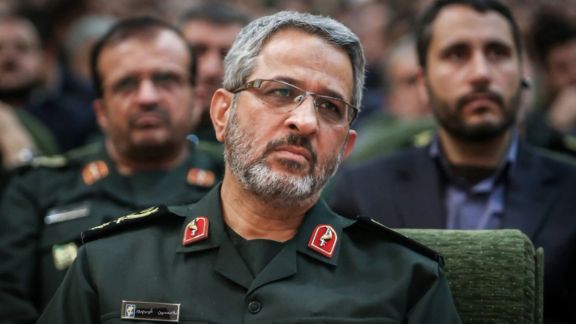
Many insiders not only stopped expressing support, but have started to denounce the regime’s policies that have led to the current uprising.
In December, a member of Iran’s Supreme Council of the Cultural Revolution acknowledged that the Islamic Republic has failed to achieve its desired religious ideological goals. Ultra-conservative Hassan Rahimpour Azghadi is regarded as a leading advocate of the ruling clergy and the ideology of a government controlled by the clergy, in contrast with traditional Shiite thinking that favors keeping seminarians independent of the government.
Some people on social media believe that such leaks are meant to pressure regime insiders to come out in defense of the Islamic Republic, which has never seemed so battered and bruised by over 100 days of popular protests challenging its existence. Even if such statements are leaked intentionally or as publicity stunts, it cannot be ignored that Ali Khamenei and his top supporters feel isolated and unable to change the situation to the former status quo.

Reports received by Iran International show the situation is tense in the city of Semirom in Esfahan province, central Iran, after people held large protests on Saturday.
Grassroot activists say on Sunday security forces attacked the house of a victim of the anti-regime protests in the city arresting some of relatives.
Meanwhile, Morteza Amo Mehdi, a top IRGC commander in Esfahan province confirmed the death of a Basij militia during the protests on Sunday, identifying him as "Mohsen Rezaei".
The IRGC commander claimed that Mohsen Rezaei was killed by bullets. He also called the protesters "rioters" and described their recent gatherings “illegal”.
A large crowd of people on Friday attended the mourning ceremony of Ali Abbasi, who was killed at the hand of regime forces forty days ago. They released balloons, sang songs, and chanted slogans against Supreme Leader Ali Khamenei.
On Saturday, a large crowd gathered in front of the governor's office to protest the repressions and chanted slogans against him. The protests in Semirom spilled into late hours of the night.
A day after these protests, reports received by Iran International show that security is beefed up and troops have been deployed to prevent further protests.
Since the beginning of the uprising in mid-September over 500 people have been killed by security forces.